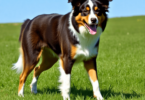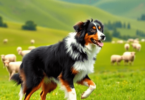Introduction to the Australian Kelpie
Meet the Australian Kelpie, an outstanding blend of athleticism and intelligence. This medium-sized herding dog, also known as the Kelpie dog or Australian sheep dog, has roots that trace back to the late 1800s in Australia. Developed from a mix of Scottish working collies and local canines, including dingoes, Kelpies were bred for one primary purpose: herding livestock.
Understanding the Australian Kelpie breed is essential for anyone considering adding this dynamic dog to their family. Their unique traits make them exceptional working dogs and loving family companions:
- Intelligent and eager to please
- Loyal and protective nature
- High energy levels requiring ample exercise
In this comprehensive guide, you will discover everything you need to know about Kelpies. Topics will include their history, physical characteristics, health concerns, training techniques, and dietary needs. By delving into this breed’s quirky personality and practical care requirements, you’ll be equipped with the knowledge to determine if an Australian Kelpie is the right fit for your lifestyle!

History of the Australian Kelpie
The Australian Kelpie has a rich and fascinating history that dates back to the late 1800s. This remarkable breed emerged from the crossbreeding of Scottish working collies and local dogs, including dingoes. The goal? To create an agile and intelligent herding dog specifically tailored for the unique demands of Australian livestock management.
Key Historical Points:
- Origin and Development: The Kelpie’s roots can be traced to Australia’s early pastoral days when sheep farming became prominent. Breeders sought dogs that could handle the vast landscapes and challenging conditions, culminating in the creation of this versatile herding dog breed.
- Influence of Local Dogs: The inclusion of dingoes in breeding programs contributed to the Kelpie’s exceptional instincts and adaptability. These local canines brought traits that enhanced the breed’s ability to navigate varied terrains and respond effectively to livestock.
- Role in Livestock Herding: Kelpies quickly became indispensable on farms, known for their remarkable stamina, intelligence, and keen herding abilities. Their skill set made them perfect partners for farmers managing large flocks of sheep or herds of cattle.
Understanding the history of Australian Kelpies provides insight into their development as not just excellent workers but also as beloved family pets.
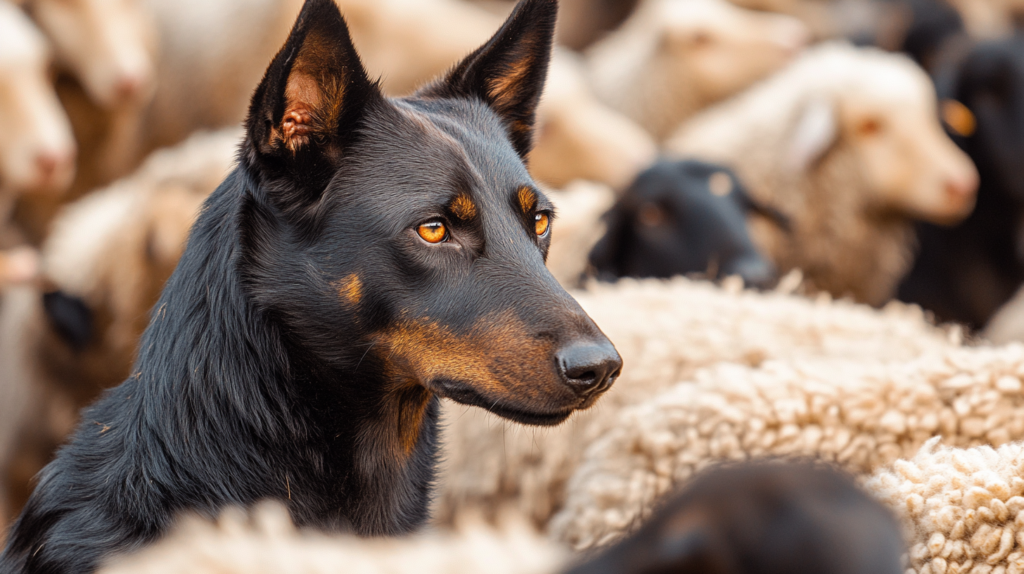
Physical Characteristics
The Australian Kelpie is a medium-sized dog that combines strength and grace. Here are some key details about their physical features:
Size and Weight
Kelpies typically stand between 17 to 20 inches tall at the shoulder and weigh anywhere from 30 to 45 pounds. This size makes them agile and capable of enduring long hours of work in the field.
Coat Types and Colors
Kelpies have a moderately short, weather-resistant coat designed for various climates. Their coat colors are as diverse as their personalities, including:
- Black
- Blue
- Red
- Tan
Each color showcases their unique charm, adding to their appeal as both working dogs and family companions.
Breed Standards
Organizations such as the American Kennel Club (AKC) and the United Kennel Club (UKC) have set specific breed standards for Australian Kelpies. These standards cover size, weight, coat type, temperament, and overall appearance to ensure consistency within the breed.
These characteristics contribute significantly to the Kelpie’s reputation as a hardworking yet affectionate member of any household. With such an impressive physical presence, Kelpies are hard to miss!
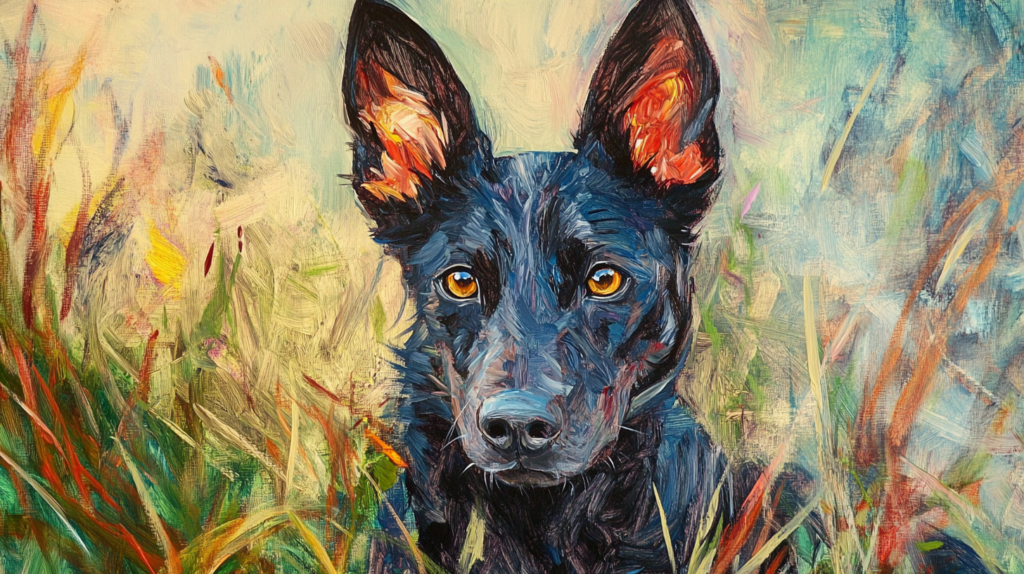
Health and Lifespan
The Australian Kelpie typically enjoys a lifespan of 12 to 15 years, making them a long-term companion for active households. As with any breed, understanding their health needs is crucial for ensuring a happy, vibrant life.
Common Health Issues
Kelpies are prone to certain health problems that potential owners should be aware of:
- Cerebellar Abiotrophy: A genetic disorder affecting coordination.
- Collie Eye Anomaly: A hereditary eye condition that can lead to vision loss.
- Luxating Patella: A knee condition where the kneecap dislocates, causing pain and mobility issues.
- Hip Dysplasia: A malformation of the hip joint, which can result in arthritis.
Preventive Care
To help maintain your Kelpie’s health:
- Schedule regular veterinary check-ups.
- Keep them at a healthy weight through diet and exercise.
- Monitor for any signs of discomfort or changes in behavior.
A balanced diet rich in protein supports their active lifestyle and contributes to overall well-being. Providing mental stimulation and engaging activities can also play a significant role in preventing some behavioral issues related to boredom. Understanding these aspects will help you create an environment where your Kelpie can thrive.
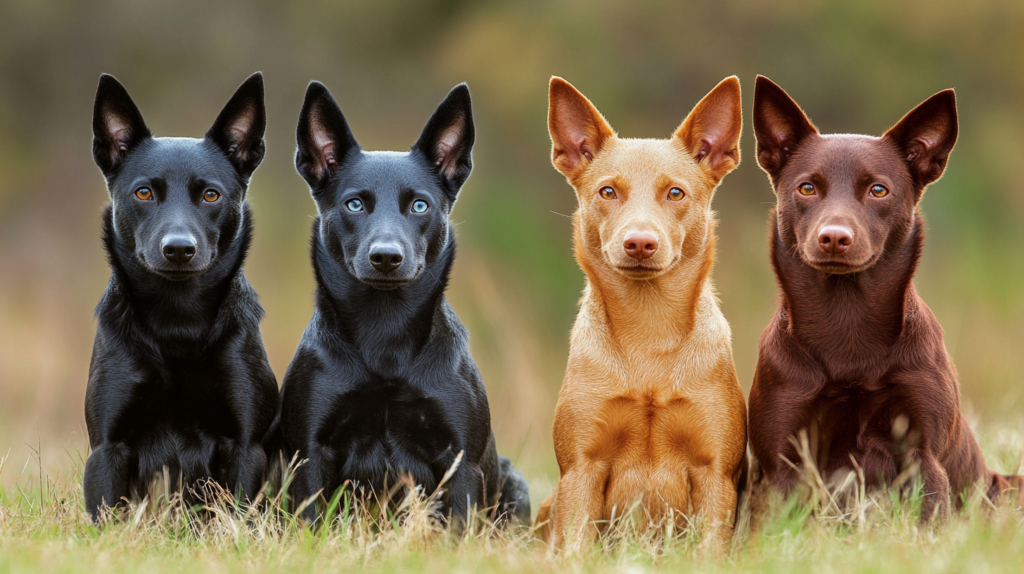
Temperament and Behavior
The Australian Kelpie is a delightful blend of intelligence, loyalty, and a protective nature. These traits make them not only exceptional working dogs but also loving family pets. Here’s a closer look at their temperament:
1. General Temperament Traits
Kelpies exhibit an eagerness to please their owners, showcasing their intelligence in various tasks. Their loyalty means they often form strong bonds with family members, making them reliable companions.
2. Interaction with Children and Other Pets
Kelpies are typically great with kids, enjoying playtime and becoming protective guardians. Early socialization helps them adjust well to other pets, although supervision is recommended to ensure harmony during interactions.
Interestingly, their temperament can sometimes draw comparisons with other breeds such as the Catahoula. Both breeds share some common traits, yet they each possess unique characteristics that set them apart. For instance, Catahoulas are known for their distinct behavior patterns which can differ significantly from those of Kelpies.
3. Potential Herding Behavior Towards Smaller Animals
With strong herding instincts ingrained in their nature, Kelpies may display chasing behavior towards smaller animals like cats or rabbits. This instinct can be managed through proper training and redirection, allowing your Kelpie to thrive as a family member while respecting the space of smaller pets.
Their unique combination of traits makes the Australian Kelpie an engaging addition to active households where exercise and mental stimulation are part of daily life.
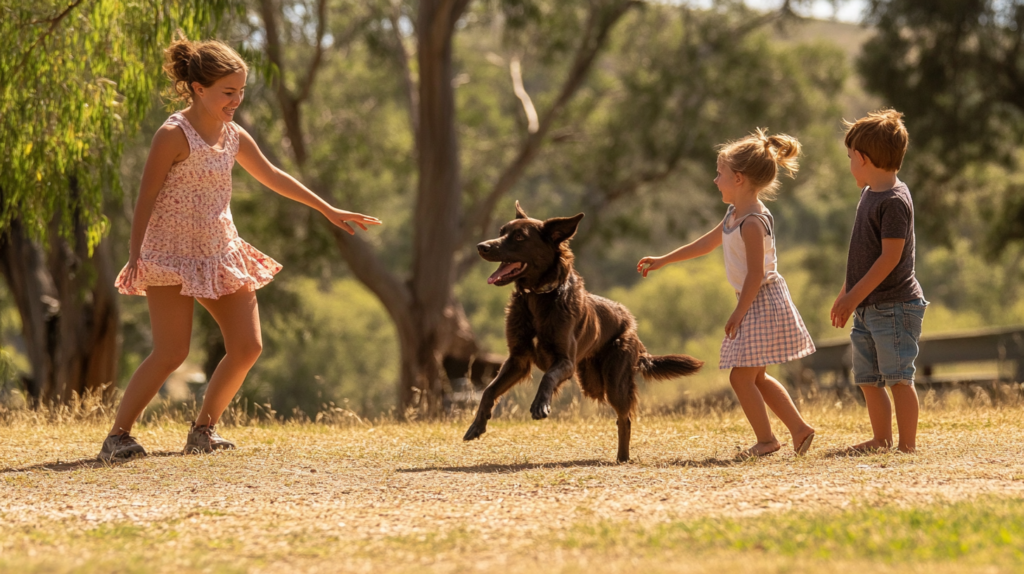
Exercise and Mental Stimulation Needs
The Australian Kelpie is a bundle of energy, requiring 1 to 2 hours of exercise daily. This energetic breed thrives on activity, making it essential for owners to provide ample opportunities for physical engagement.
Recommended Activities:
- Obedience Training: Not only does this enhance their trainability, but it also strengthens the bond between you and your Kelpie.
- Canine Sports: Activities such as agility, flyball, and herding trials tap into their natural instincts while keeping them mentally stimulated.
Kelpies are incredibly intelligent and need challenges to prevent boredom-related behaviors. Without sufficient mental and physical stimulation, they might resort to destructive actions like chewing furniture or excessive barking.
Incorporating interactive toys, puzzle feeders, and even scent work can keep their minds sharp. Engaging in regular playtime not only satisfies their exercise needs but also nurtures their playful spirit.
Providing a well-rounded routine ensures your Kelpie remains happy and healthy. Embracing their active lifestyle leads to a fulfilling relationship with these remarkable dogs.
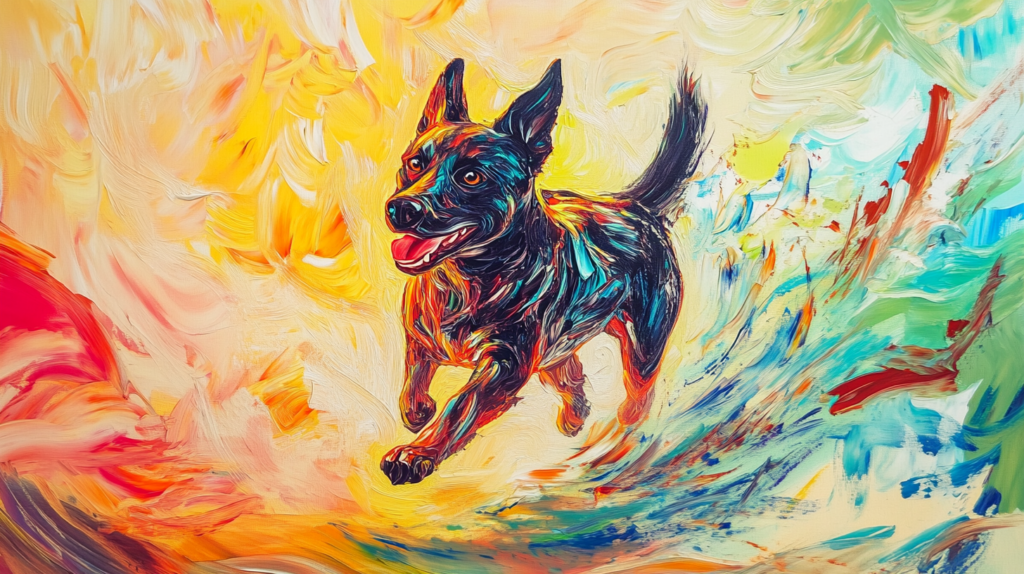
Training Techniques for Kelpies
Training Kelpies can be a rewarding adventure, but it requires understanding their unique traits. Here are some best practices to consider:
1. Establish Clear Commands
Use consistent commands and signals. Since Kelpies are intelligent, they quickly learn what you expect from them.
2. Positive Reinforcement
Rewarding good behavior with treats, praise, or playtime works wonders. This method encourages them to repeat desired actions and strengthens your bond.
Independent thinking is one of the Kelpie’s defining characteristics. This trait often leads to challenges during training sessions:
1. Distractions Are Everywhere
Kelpies may become sidetracked by sounds or movements around them. Keeping training sessions short and fun helps maintain focus.
2. Patience Is Key
Their strong-willed nature can lead to stubbornness. Remain patient and persistent while reinforcing commands.
Recommended training methods include:
- Obedience Training Classes: These structured environments provide socialization opportunities alongside professional guidance.
- Canine Sports: Engaging in activities like agility or herding trials not only channels their energy but also enhances obedience skills.
Through proper training techniques, your Australian working dog can thrive as both a farm dog and a beloved family companion.
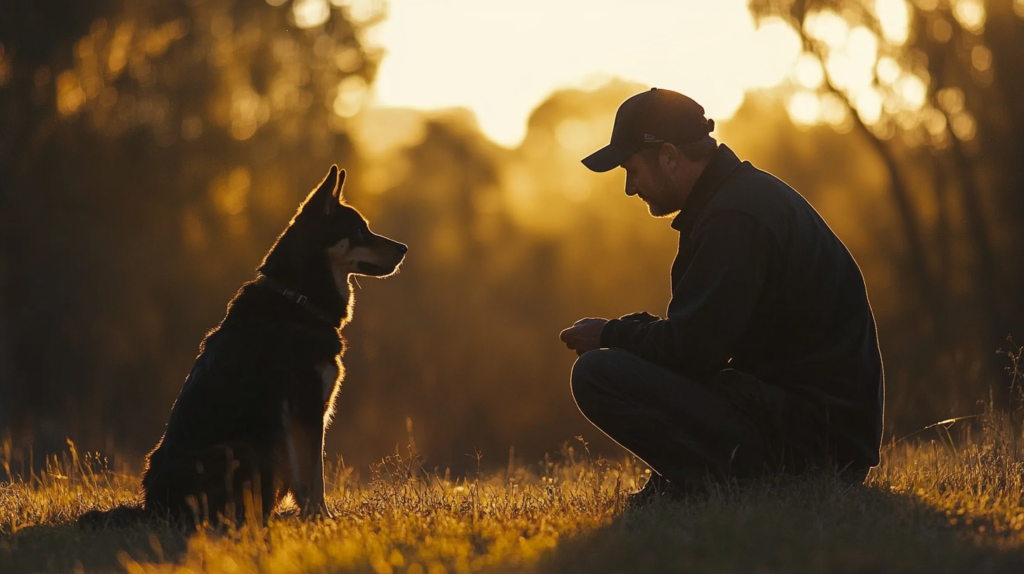
Grooming Requirements in Australian Kelpies
Keeping your Australian Kelpie looking sharp and feeling great involves a few fun grooming sessions. Here’s what to know:
Grooming Needs
- Shedding Cycles: Kelpies shed moderately year-round, with heavier shedding periods during spring and fall. Regular brushing helps manage this shedding and keeps their coat healthy.
- Nail and Ear Care: Don’t forget about those paws! Regular nail trimming is essential to prevent discomfort. Checking ears for dirt or wax buildup ensures they stay infection-free.
Dietary Needs & Living with an Australian Kelpie
A high-quality diet is essential for the energetic and active lifestyle of the Australian Kelpie. These dogs thrive on a diet rich in protein to support their robust muscles and stamina.
Key Feeding Guidelines:
- Protein Requirements: Look for dog food with at least 20-30% protein content. This ensures your Kelpie gets the energy needed for their daily adventures.
- Feeding Frequency: Young Kelpies (under a year old) benefit from three meals a day, while adults typically do well with two meals.
- Portion Sizes: Follow guidelines on the dog food packaging, adjusting based on your dog’s weight and activity level.
Assessing Suitability:
When considering if a Kelpie is right for you, evaluate your lifestyle:
- Active Families: Perfect match! Kelpies love to run, play, and engage in various activities.
- Sedentary Lifestyles: May not be ideal as Kelpies require significant physical and mental stimulation to prevent boredom-related behaviors.
Integrating a Kelpie into Family Life:
- Provide plenty of exercise opportunities like walks, fetch, or agility training.
- Involve them in family activities to strengthen the bond and keep them happy.
Embracing the energetic spirit of a Kelpie enriches both your life and theirs. With the right approach to their dietary needs and family integration, these dogs make fantastic companions!
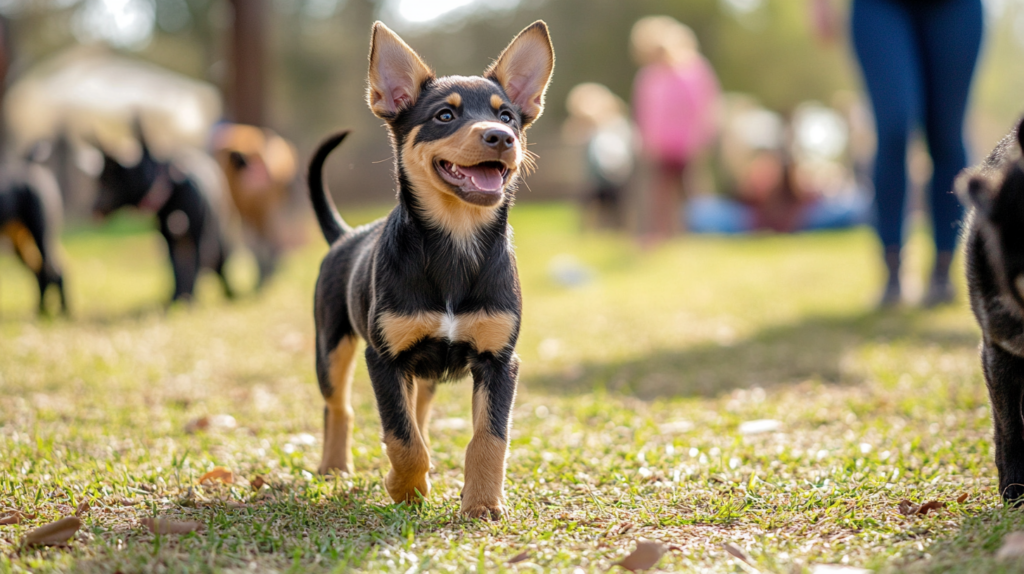
Is an Australian Kelpie Right For You?
Considering an Australian Kelpie as your next furry friend? Here’s what to ponder before making the leap:
- Activity Level: Kelpies thrive in active environments. They require 1 to 2 hours of exercise daily. If you enjoy outdoor activities, hiking, or running, a Kelpie might be the perfect match!
- Family Dynamics: Known for their loyalty and affection, these dogs are great with children. However, their herding instincts could lead them to chase smaller pets, so careful introductions are essential.
- Training Commitment: Intelligent but independent thinkers, Kelpies need consistent training. Engaging them in obedience tasks or canine sports can harness their energy positively.
- Grooming and Health Care: Regular grooming is crucial during shedding seasons. Be prepared for potential health concerns like collie eye anomaly or hip dysplasia.
In short, if you lead an active lifestyle and can dedicate time to train and care for your Australian Kelpie, you’ll gain a devoted companion ready to tackle any adventure with you!
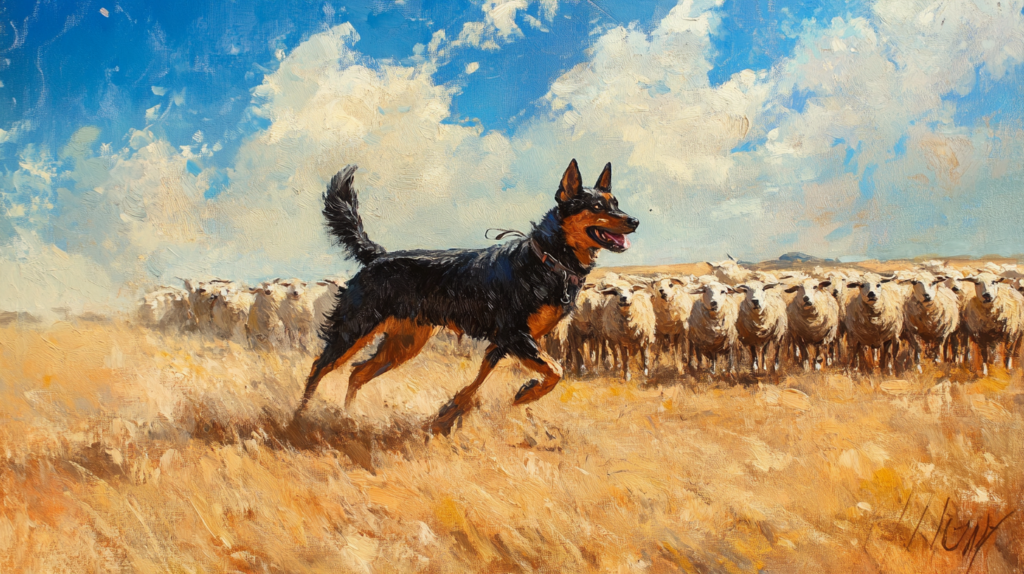
FAQs (Frequently Asked Questions)
What is the Australian Kelpie known for?
The Australian Kelpie is primarily known as a working dog, renowned for its herding abilities and intelligence. It is also valued as a loyal family pet, making it a versatile breed.
What are the key physical characteristics of an Australian Kelpie?
Australian Kelpies are medium-sized dogs, typically standing between 17 to 20 inches tall and weighing between 30 to 45 pounds. They come in various coat colors including black, blue, red, and tan, with different coat types.
How much exercise does an Australian Kelpie need?
Australian Kelpies require a significant amount of exercise, ideally between 1 to 2 hours daily. Engaging activities such as obedience training and canine sports are essential to keep them physically fit and mentally stimulated.
What are common health concerns associated with Australian Kelpies?
Common health issues in Australian Kelpies include luxating patella, hip dysplasia, cerebellar abiotrophy, and collie eye anomaly. Regular veterinary care and preventive management strategies are important for maintaining their health.
Are Australian Kelpies suitable for families?
Yes, Australian Kelpies can be excellent family pets due to their loyalty and protective nature. However, they thrive best in active households where they can receive adequate exercise and mental stimulation.
What training techniques work best for Australian Kelpies?
Training an Australian Kelpie requires patience and consistency due to their independent thinking. Recommended techniques include positive reinforcement methods and engaging activities that challenge their intelligence while minimizing distractions.

